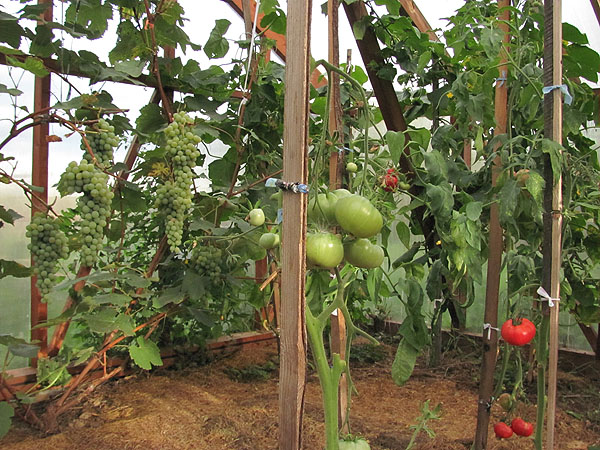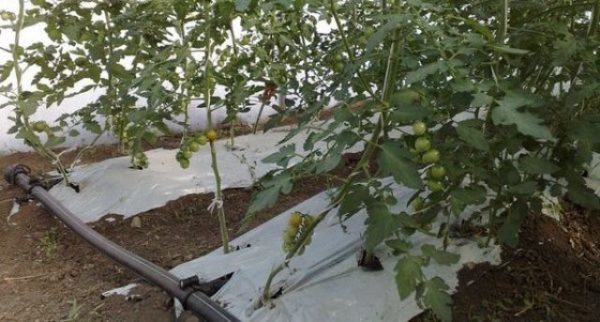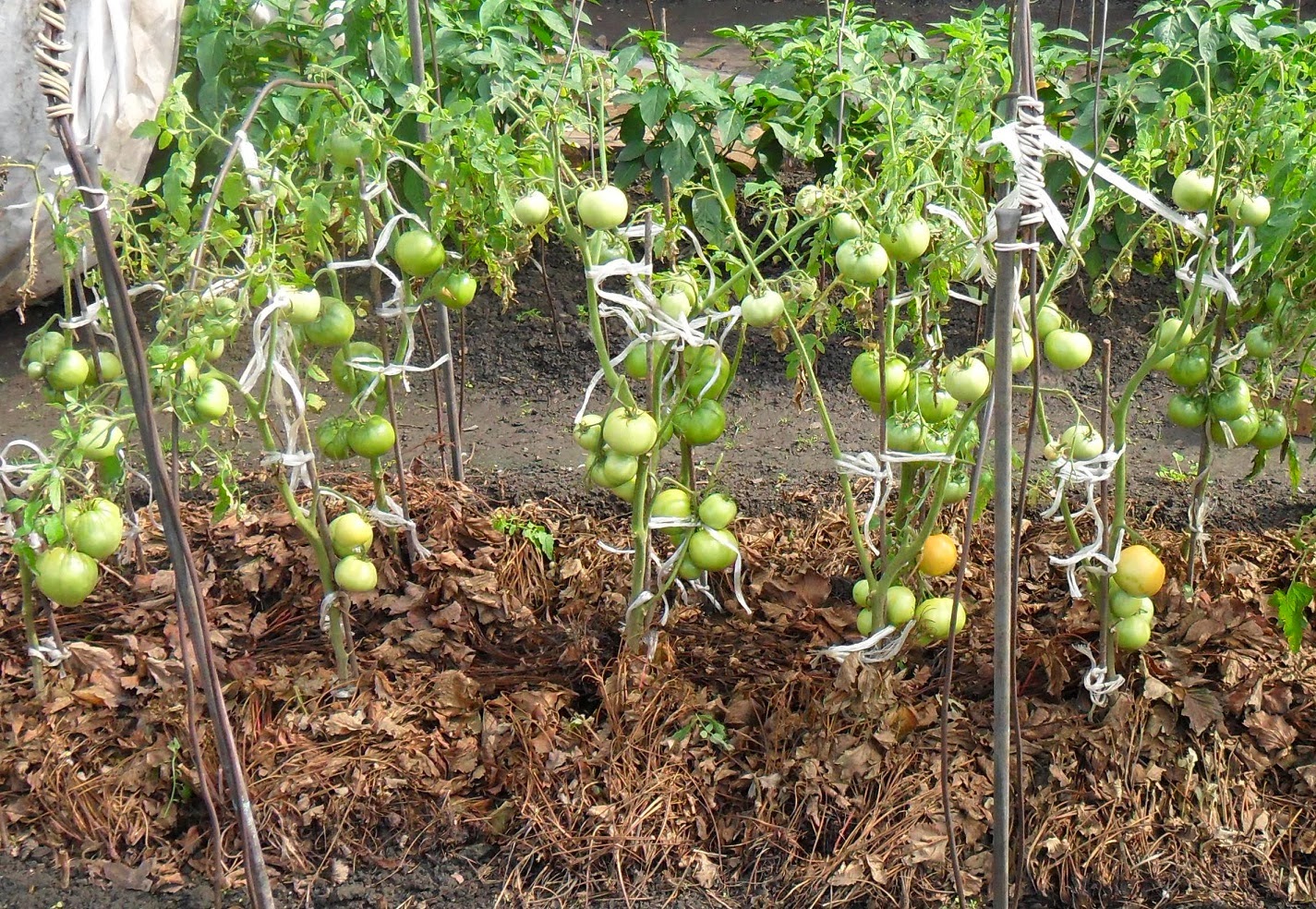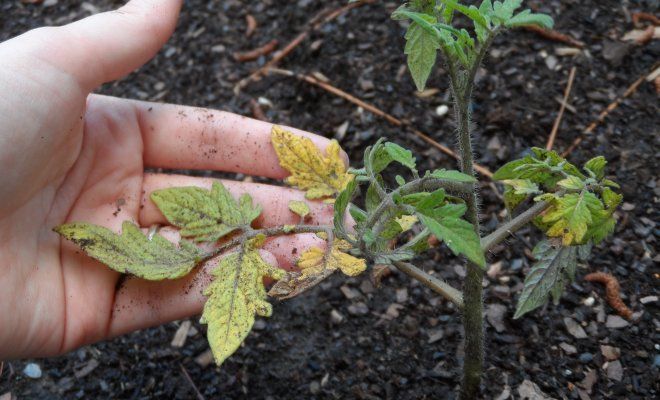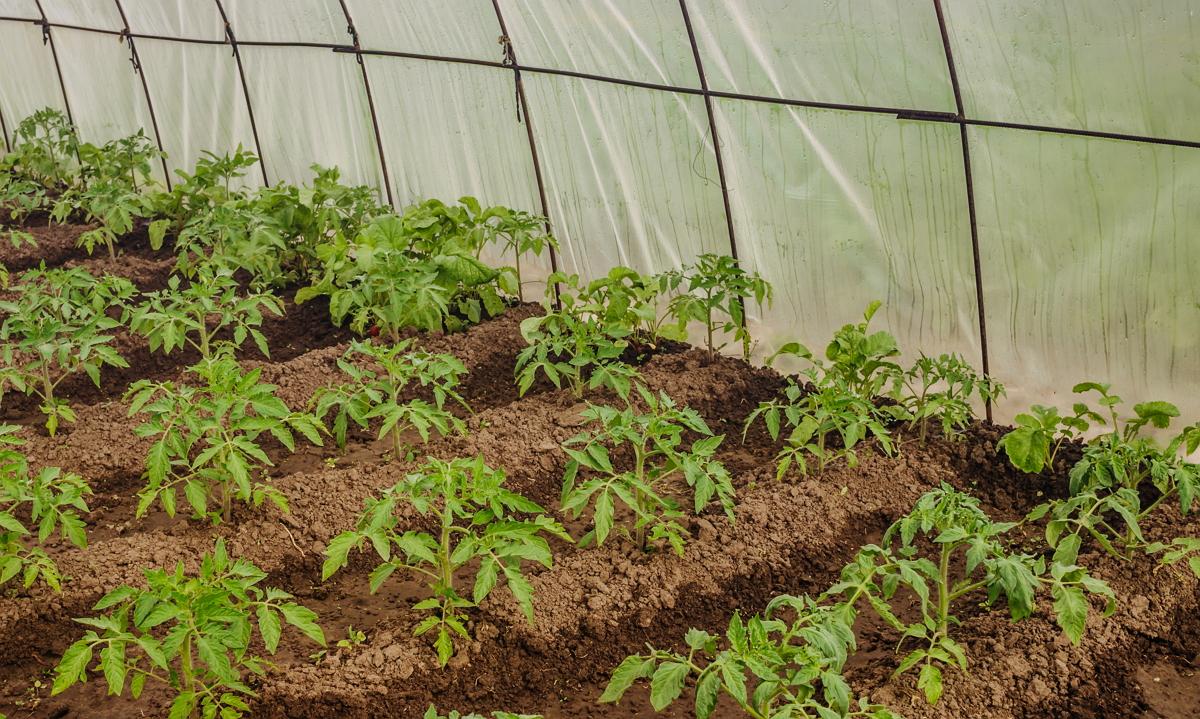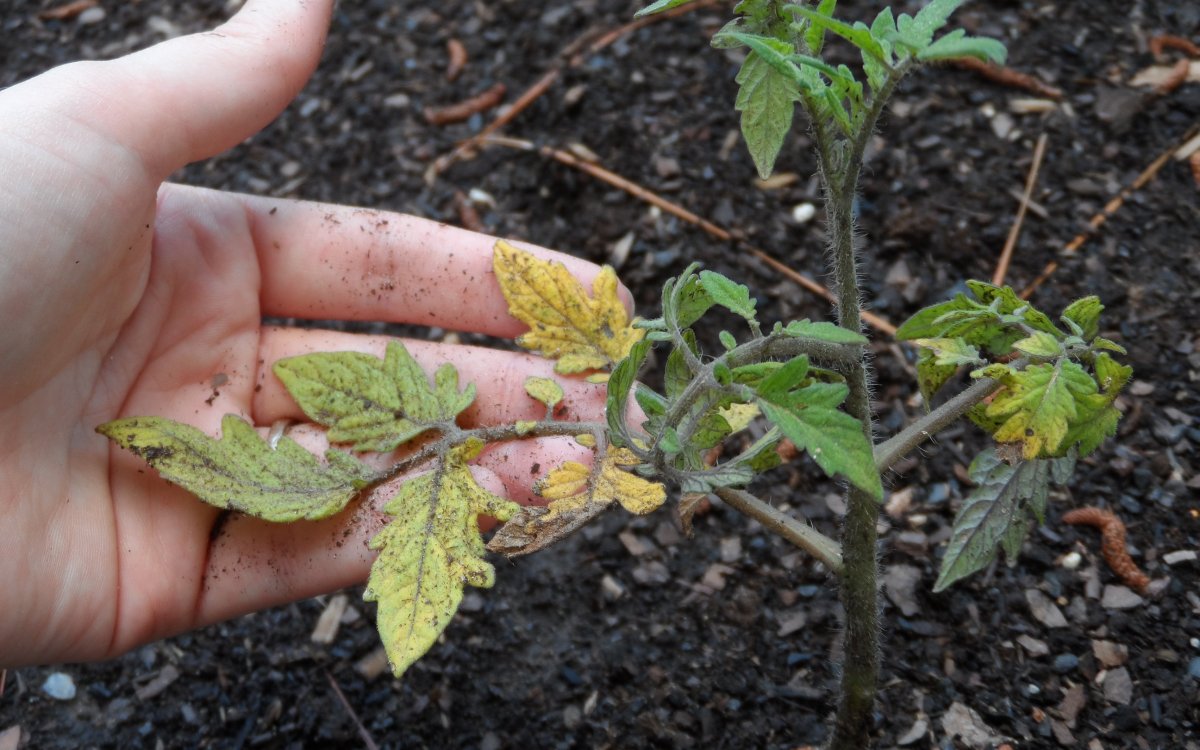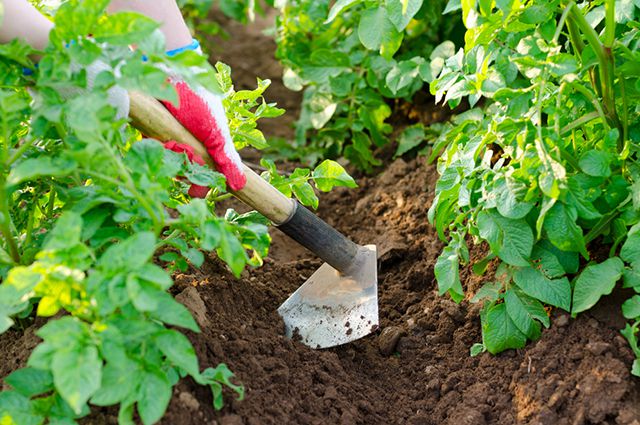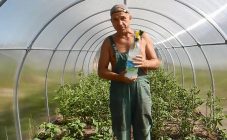Content:
Tomatoes are grown in almost every summer cottage. This is not a difficult occupation, subject to the general rules of planting, growing and caring for them, but requiring constant attention.
The tomato is a perennial plant in the nightshade family. On the territory of Russia, a large number of tomato varieties with a short ripening period are grown, differing in taste and cultivation specifics. Tomatoes are grown outdoors in the illuminated southern part of the garden area, sheltered from the north winds, and in a polycarbonate greenhouse.
Characteristics of tomato culture
Tomato is an annual shrub up to 90 cm high. Good growth requiress:
- The soil. The tomato grows on loose, fertile soil saturated with nitrogen, phosphorus and potassium. Soil acidity - 6-6.7 pH.
The best precursors of the tomato: carrots, onions, herbs, beets, turnips. You can not plant a tomato in the soil after: potatoes, eggplant, zucchini, pepper, peas. The best neighbors: celery, basil, radish, parsley, garlic, flowers: marigolds, calendula. - Temperature. The tomato grows well in warm weather: about +24 degrees in an open space and from +24 to +31 degrees in a greenhouse.
- Growing. Tomatoes are grown as seedlings.
- The seeds are treated with a solution of boric acid, sown in a two cm depression in the soil, and covered with glass or foil. Term - 2 months before planting in the ground.
- When planting in the soil, holes are made at a distance of 30 cm and 40 cm between rows - for early varieties, 50 * 50 cm - for later ones.
It is planted in open soil in late May or early June, in a heated greenhouse in mid or late April.
- Watering. Abundant, once a week.
- Fruit. Fruit collection is periodic and ends in mid-September, with the arrival of cold weather.
To facilitate the care of tomatoes during the growing process, to accelerate growth and to harvest more crops from the beds, gardeners use a well-known agricultural technique - mulching. This is the covering of the soil in the place where the tomato grows with a special organic or inorganic layer of raw materials. The history of mulching has its roots in the late seventeenth century and is translated from English as cultivation of soil cover.
Mulching
Mulching the soil in a greenhouse with tomatoes and outdoors contributes to:
- Protect the tomato root system from cold weather and first frost.
- Replaces soil loosening and periodic thinning from weeds and other grass.
- Serves as a prophylaxis against various diseases, protection against bacteria and decay, and allows you to abandon artificial herbicides with a chemical composition.
Mulching tomatoes in a greenhouse should be a cost effective procedure. Raw materials for mulch are affordable, otherwise all the work will be in vain because of the effort and time spent. Also, mulching tomatoes should not be harmful to the culture: the substances formed during the decomposition process should not emit toxic components that lead to wilting and death of the plant.
Mulching has the following benefits:
- A covering layer of mulch protects the soil from direct sunlight and prevents it from drying out. No crust forms on the surface of the soil, which interferes with the penetration of air.
- The mulch prevents weeds from sprouting that damage the tomato and absorb nutrients from the soil.
- Under the layer of mulch, the process of debate takes place: the mulch is eaten and processed by earthworms. Natural humus is produced and the soil is fertilized naturally. In this way, fertilization for tomatoes can be reduced.
- When watering tomatoes, mulch does not allow moisture to evaporate from the soil layer on top, retains it and retains it longer. Tomatoes do not need to be looked after much, because the amount of watering is reduced, and there is no need to loosen the soil. The irrigation process itself is simplified, the mulch protects the top and root layer of the soil from erosion.
- Mulch prevents tomato diseases and late blight by reducing evaporation in the greenhouse. The greenhouse complex is a closed space, the temperature in it is increased, due to this, accelerated evaporation of moisture occurs, the conditions of high humidity are quite destructive for tomatoes, hinder their growth and development. Fungal diseases (rot, spotting, and others) cannot pass from the soil to the tomato bush due to the obstacle in the form of mulch.
How to mulch tomatoes in a greenhouse
Mulch for tomatoes is divided into two types: organic, which includes natural ingredients (grass, straw, sawdust, compost), and inorganic, consisting of artificial components (film, roofing felt, paper).
Organic mulch
Natural materials are preferable to artificial ones due to their properties. They themselves gradually decompose, turn into humus and serve as fertilizer for tomatoes. They contain useful trace elements and nutrients that, when decomposed, saturate the soil and promote the growth and development of the tomato.
Straw
The soil is covered with straw 10-15 cm thick. After a while, it settles a little, and the layer becomes noticeably thinner. Air circulates perfectly through the straw layer to the roots of the plant. Straw mulch is a good heat insulator. Prevents the formation of rot, spotted leaves on the tomato and protects against anthracnose. The straw prevents weeds from growing.
This mulch increases the yield of the tomato and serves as an additional material for the formation of humus.
Grass
Mulching tomatoes in a greenhouse with cut grass is a common practice. To create mulch from grass, any freshly cut meadow grass is suitable: nettles, young weeds that did not have time to give seeds and those left over from weeding the garden. First you need to mow the grass, then finely chop it and leave it for several days under the sun to dry it and get rid of harmful insects that can live in it.
A thick layer of grass should be taken to cover the soil around the tomato bush. Grass, like straw, settles down more than half after a while. As a result, the layer of grass should be at least 5 cm.
Grass mulch is subject to very rapid decomposition, so after a while it is worth sprinkling on a new layer. When decomposed from the grass, nitrogen and other beneficial trace elements, which are loved by tomato bushes, enter the soil.
Sawdust
When asked whether it is possible to mulch tomatoes with sawdust in a greenhouse, the answer is yes. This mulching method is considered the most common. The thickness of the layer sprinkled with sawdust is about 15 cm, if it is poured onto the ground thinner, then the weeds can germinate unhindered.
Sawdust mulch retains moisture well, and the soil is always naturally moistened; when watering, sawdust quickly passes water through itself and absorbs excess. If a weed sprouts, it is very convenient to weed it out through the sawdust mulch.
The disadvantage of sawdust mulch is that they absorb a significant amount of nutrients from the soil and oxidize it.
When preparing sawdust mulch, do not use leaves and bark from conifers. They contain essential oils and volatile substances that disrupt the composition of beneficial microorganisms.
Compost
The ideal mulch will be compost. It is easy to prepare it from scrap at hand, these are: weeds, old paper, household waste, hay, sawdust shavings. The consistency of the finished compost is uniform, odorless, free of impurities and completely rotted.
The correct way to lay the finished compost on the ground is a mandatory layer thickness of about 3 cm. Only this mixture does not last long, it is quickly processed by earthworms, and you need to periodically put a new layer.
Compost perfectly protects and supplies tomatoes with micronutrients. However, be careful not to add too much compost mulch to the soil. It contains a lot of nutrients and useful microelements, a tomato bush can grow strongly, while the fruits will not set well and ripen very late.
The lack of compost is only in its unaesthetic form and in the inadmissibility of spreading it on the ground when it has not completely rotted. It can retain weed seeds and many parasites.
Inorganic mulch
In addition to natural ingredients, artificial materials can be used for mulch. However, not all summer residents and gardeners consider it advisable to waste money on agrotex, spunbond and similar materials. Replace them with regular polyethylene, burlap and other readily available ones.
The service life of inorganic materials is much longer than that of organic materials. They serve several seasons in a row. The inorganic does a great job of creating a greenhouse effect and the tomato bush grows quickly and well.
Film
Mulching film must meet the following characteristics: be red, black or white, always opaque and strong. For the southern regions, the desired color is white; for faster ripening of the fruits, black is needed.
The film prevents weeds from growing. To lay it down correctly, you need to press it well to the ground, fix the edges with something heavy.
The film is covered in cool weather, it cannot be used in the summer months so that the soil under it does not overheat and the plant does not become infected with fungal diseases.
Newspapers, paper and cardboard
Before mulching a bed of newspapers, paper or cardboard, the soil around the tomatoes is loosened and additionally fertilized. The paper is pre-crushed, moistened in a liquid solution of fertilizers, allowed to settle for a while and cover the ground up to 15 cm in height. Paper mulch is a good way to insulate the soil, it lasts for a long time.
Lack of paper - no nutrients. It is advisable not to use newspapers and printed paper that contains paint and lead. Slugs can lodge in excessively wet paper.
Non-woven covering fabric
Geotextiles will do. The canvas has a porous structure, it allows water and air to pass through well, and also protects from sunlight.
Such mulch serves for several years. Protects from frost and from fungus, rot and pests. It is covered with a single layer of soil. The disadvantage is the high cost of the material.
What you can not mulch tomatoes in a greenhouse:
- Roofing material. Although this material is very durable and reliable in operation, it protects against weeds, but it is very toxic.
- Pure peat. It strongly oxidizes the soil.
- Fresh manure. Can burn tomato roots.
ATtime for laying out mulch
In the greenhouse
If mulch is carried out in a heated greenhouse or greenhouse, you can mulch at any time.
If the greenhouse is unheated, then mulching is carried out after warming up the soil, when there is no threat of frost.
In the open field
Mulching is carried out after the soil warms up to +15 degrees at a depth of up to 30 cm. Otherwise, the mulch, prematurely laid out, will not allow the earth to warm up. Another condition is that the seedlings must take root.
Mulching is an ancient technology that has not lost its relevance today. Mulching tomatoes is the best and very effective way to significantly increase the yield and save the plant from hardships.

